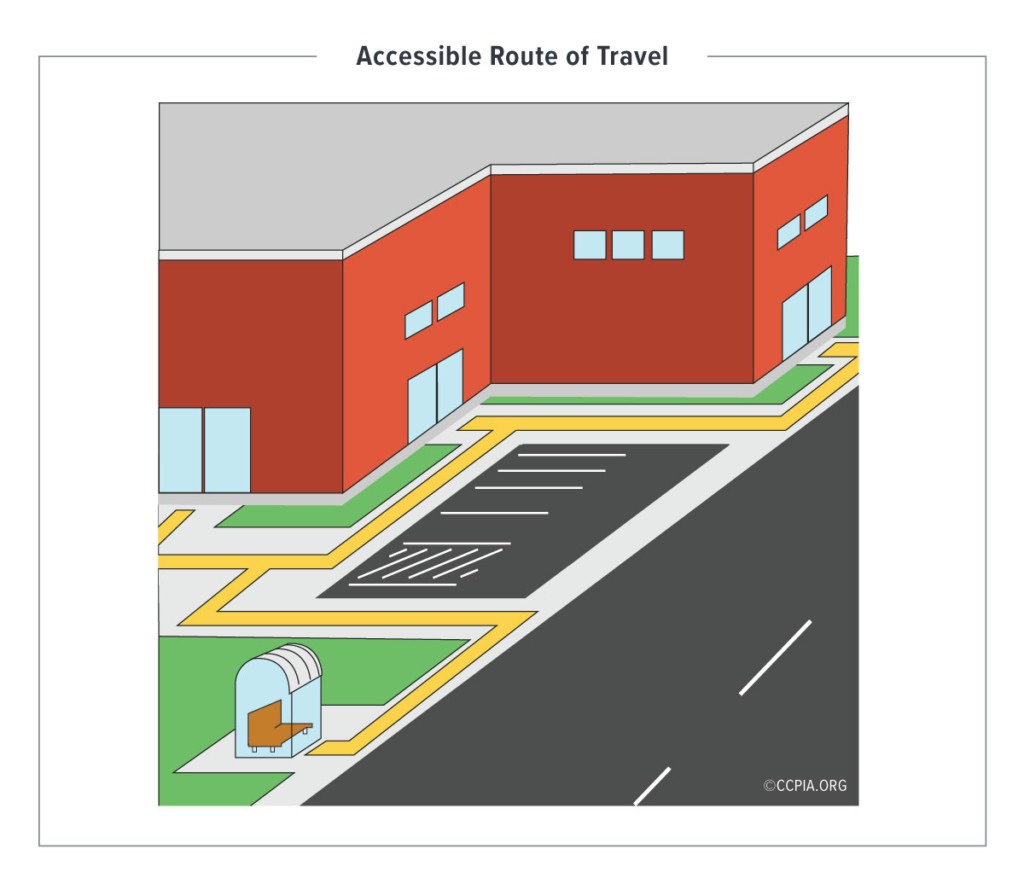About this video:
Learn about the accessible route of travel in this video based on the ComSOP Standard Accessibility Inspection Report for Existing Commercial Buildings, with Lance Coffman, CCPIA® instructor and owner of Focus Building Inspections. The term “accessible route” refers to a continuous, unobstructed passageway constructed to provide access to a property and its public features to individuals with disabilities. The accessible route cannot be inferior to the ordinary route used by the general public. At least one accessible route should connect exterior site arrival points to the accessible entrance, including reserved parking spaces and loading zones, public sidewalks and streets, and onsite public transit stops.

Section 2 lists the checkpoints inspectors should verify on the route of travel from parking areas during an accessibility inspection, including:
2.1___There is a route of travel from the accessible parking spaces to the accessible entrance that does not require the use of stairs.
2.2___The route of travel is at least 36 inches wide.
2.3___The slopes on the route of travel are not greater than 5% (1-inch rise/20-inch run).
2.4___The route of travel is stable, firm and slip-resistant.
2.5___The curbs on the route of travel include ramped curb-cuts with a width of at least 36 inches.
The Standard Accessibility Inspection Report for Existing Commercial Buildings is available in the ancillary document section of the ComSOP. Review the Commercial Inspection Standards of Practice to view the full reporting tool.
Additional Resources for Commercial Property Inspections:


